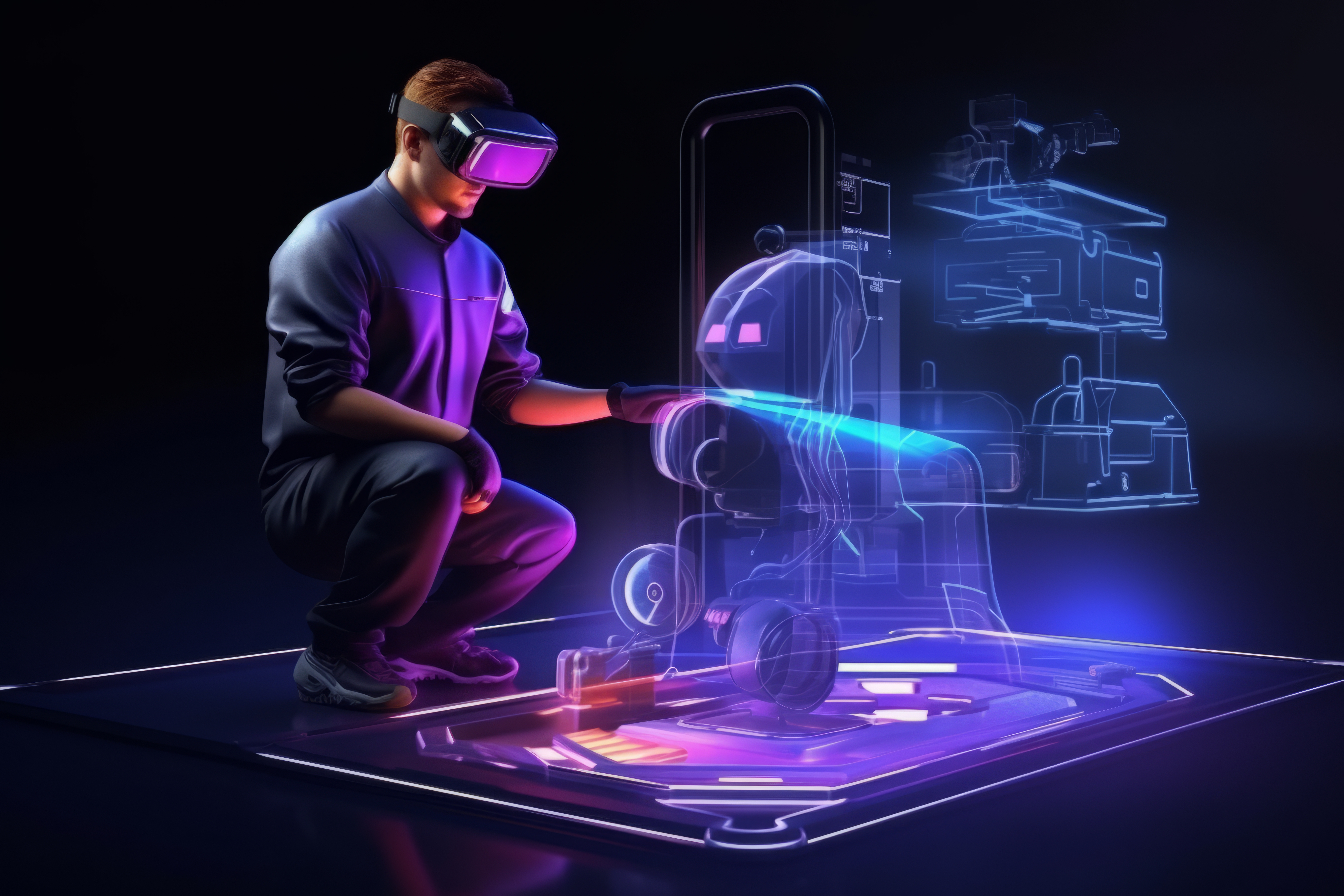Imagine a classroom where students can walk through a human heart, watch the water cycle unfold in real time, or rotate and examine a volcano before it erupts — all without leaving their desks. This isn’t science fiction. This is the reality of modern education, powered by Augmented Reality (AR) and 3D learning models.
Why Traditional Teaching Alone Is No Longer Enough
For years, educators have relied on textbooks, whiteboards, and chalk to explain complex ideas. While these tools have been valuable, they often fall short in helping students visualize and internalize abstract or scientific concepts.
Take, for example:
- Explaining how blood circulates through the human body using just diagrams.
- Teaching planetary motion on a 2D page.
- Describing the internal structure of an atom without any interaction.
These concepts are foundational, but many students struggle to understand them simply because they can’t see or interact with them. And that’s where AR and 3D learning models are transforming education.
What Is AR and Why It’s a Game Changer
Augmented Reality (AR) adds interactive digital content to the real world using a device like a mobile phone or tablet. In education, it means students can see a beating heart on their screen as they hold their book. They can rotate a 3D model of Earth and zoom in on different layers of the crust, mantle, and core.
3D Models, meanwhile, allow students to explore structures with depth and detail—something impossible in static images. They can rotate, magnify, and dissect these models to learn by doing, not just by reading.
Benefits That Go Beyond the Classroom
Here’s how AR and 3D models are making education better:
1. Visual Learning Leads to Deeper Understanding: Many children are visual learners. When they see how things work, they understand better. AR allows real-time visualization of processes like digestion, weather patterns, or energy flow in ecosystems.
2. Higher Engagement and Participation: Students are naturally drawn to interactive and dynamic content. AR and 3D models hold their attention and increase classroom participation.
3. Improved Retention:Studies show students remember more when they learn through visuals and interaction. A student who sees a volcano erupt is more likely to remember the process of volcanic eruption than one who only reads about it.
4. Inclusivity in Learning: Students with learning difficulties, especially those who struggle with reading or auditory information, find AR and 3D content more accessible and enjoyable.
5. Safe Experimentation: AR provides a risk-free space to conduct experiments that are otherwise expensive or dangerous — like exploring chemical reactions or virtual dissections.
How Mittlearn Is Leading This Transformation:
At Mittlearn, we’re not just following trends — we’re building tools to solve real classroom problems. Our focus is on enhancing the teacher’s ability while keeping students fully engaged.
Mittsure Lens: Augmented Reality in Your Hands
Mittsure Lens lets teachers project AR models directly from their mobile devices onto books or surfaces. With a simple scan, concepts leap off the page and come alive. No internet?
No problem. It works offline too.
TeachLite: Your Offline Teaching Companion
Not every school has a high-speed internet connection, but every student deserves modern learning tools. TeachLite is an offline digital assistant packed with:
- CBSE-aligned 3D models
- Interactive science and math concepts
- Support for multiple languages
- Immersive quizzes and animations
- It helps teachers explain difficult topics easily — even in remote or under-resourced schools.
Real Impact in Indian Classrooms
Schools using Mittlearn tools have shared powerful feedback:
- Students are more enthusiastic and attentive in class
- Teachers find it easier to explain tough concepts
- Classroom performance, especially in Science and Math, has improved significantly
Whether you’re a principal looking to digitize your school or a teacher aiming to bring a spark back to your lessons, Mittlearn is your trusted partner.
Education today must go beyond books. It should ignite curiosity, make learning joyful, and prepare students for a digital world. With AR and 3D models, we’re turning passive learning into active exploration.
At Mittlearn, we believe every child deserves access to the kind of education that inspires them to think, ask, and discover — no matter where they live or what device they use.
